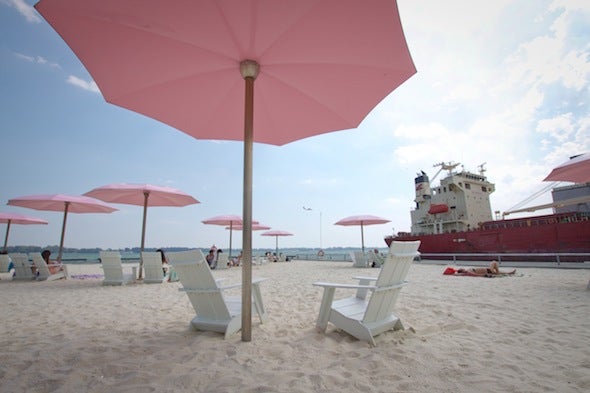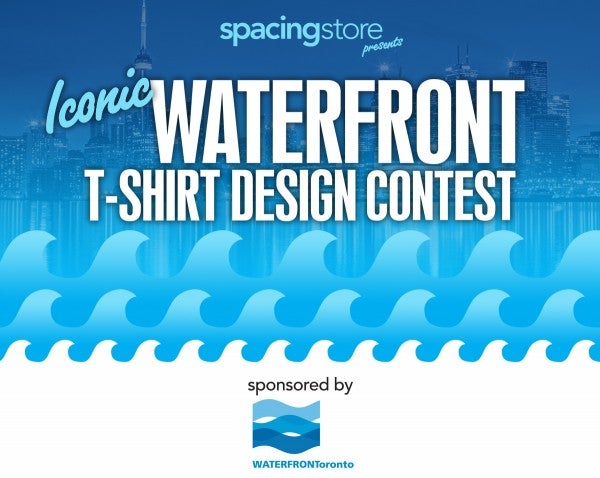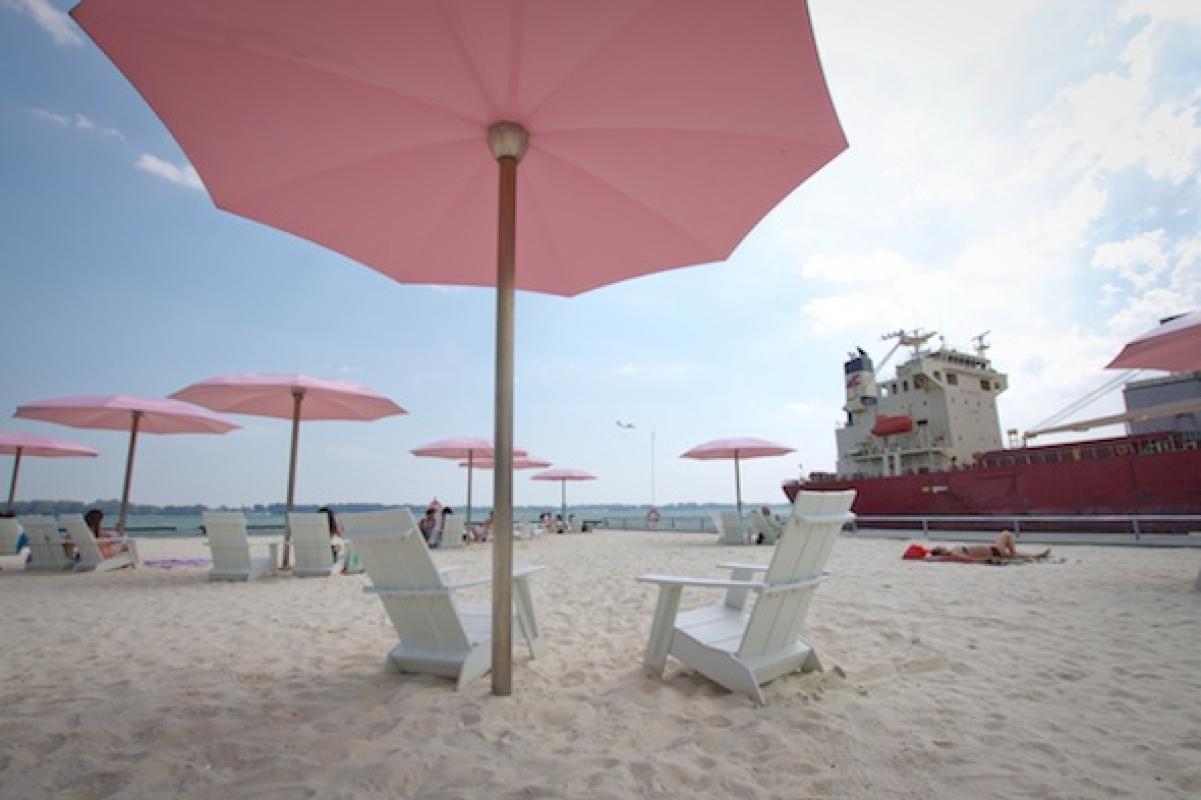We Want You to Design a T-shirt that Celebrates One of Toronto’s Iconic Waterfront Places

Canada’s Sugar Beach has become a symbol of Toronto’s rapidly transforming waterfront. Its pink umbrellas and white Muskoka chairs are so iconic that they are recognized around the world. (Photo credit: Joel Levy - Toronto is Awesome)
By Christopher McKinnon
As Torontonians, we can be oddly myopic about the fact that our city is waterfront city. We rarely think of it that way, unless it’s to lament our blocked access to the water by rail, expressway or condos. We repeat the perennial myth to ourselves over and over: Toronto is a city that turned its back on the waterfront. This myth persists in our collective consciousness, even in the midst of the extraordinary, positive change our waterfront has seen over the last decade
True, like all good myths, there is a kernel of truth at the heart of this. Toronto’s waterfront was long neglected. With the exception of seasonal attractions like Ontario Place or the revitalization attempt in the late 1970s that produced Harbourfront Centre and Queen’s Quay Terminal, it’s pretty fair to say that Toronto’s shoreline was (and had been for generations) a dusty, unkempt place, riddled with industrial buildings and parking lots.
The myth that "Toronto turned its back on its waterfront" is no longer true
Over the last couple of decades, we’ve seen a new aesthetic emerging in Toronto’s waterfront spaces. You can trace the changing tide back to improvements in the late eighties (Little Norway Park, 1987) through the nineties (Toronto Music Garden and Spadina Quay Wetland, 1999). Even designating Hanlan’s Point Beach as an officially clothing-optional (2002) is evidence of Toronto’s evolving attitude toward how our waterfront can be used.
But our waterfront aesthetic really started to transform within the last decade. HTO Park and Ireland Park (2007); the Spadina, Rees and Simcoe Wavedecks (2008-2009); Sherbourne Common and Canada’s Sugar Beach (2010); Ontario Square, Canada Square and Exhibition Common at Harbourfront Centre (2013) – all across the waterfront, parking lots and disused industrial spaces have been reimagined as dynamic public spaces.
And, so… a T-Shirt Design Contest!
 Toronto has so many distinctive waterfront places that are worth celebrating. New places like Sugar Beach and its now iconic pink umbrellas. Monuments to our industrial heritage like the Canada Malting Silos or the Hearn Generating Station. Inspiring natural spaces like the Leslie Street Spit or the Toronto Islands.
Toronto has so many distinctive waterfront places that are worth celebrating. New places like Sugar Beach and its now iconic pink umbrellas. Monuments to our industrial heritage like the Canada Malting Silos or the Hearn Generating Station. Inspiring natural spaces like the Leslie Street Spit or the Toronto Islands.
So, along with our friends at Spacing, we thought, “Why not hold a contest? Why not make some t-shirts?”
Now we’re calling all artists, designers and illustrators to submit their t-shirt designs. The contest runs until May 27, 2015 and it’s free to enter.
The winning designers will each receive a $750 prize. The winning designs will be featured on t-shirts for sale at the Spacing Store. A portion of the proceeds from sales will go to Park People, an awesome charity that works to facilitate neighbourhood engagement with local parks and public spaces.
What’s your favourite iconic place on Toronto’s waterfront? And what would it look like on a t-shirt proudly sported by Torontonians and tourists alike?
Learn more about the contest on Spacing’s blog.

